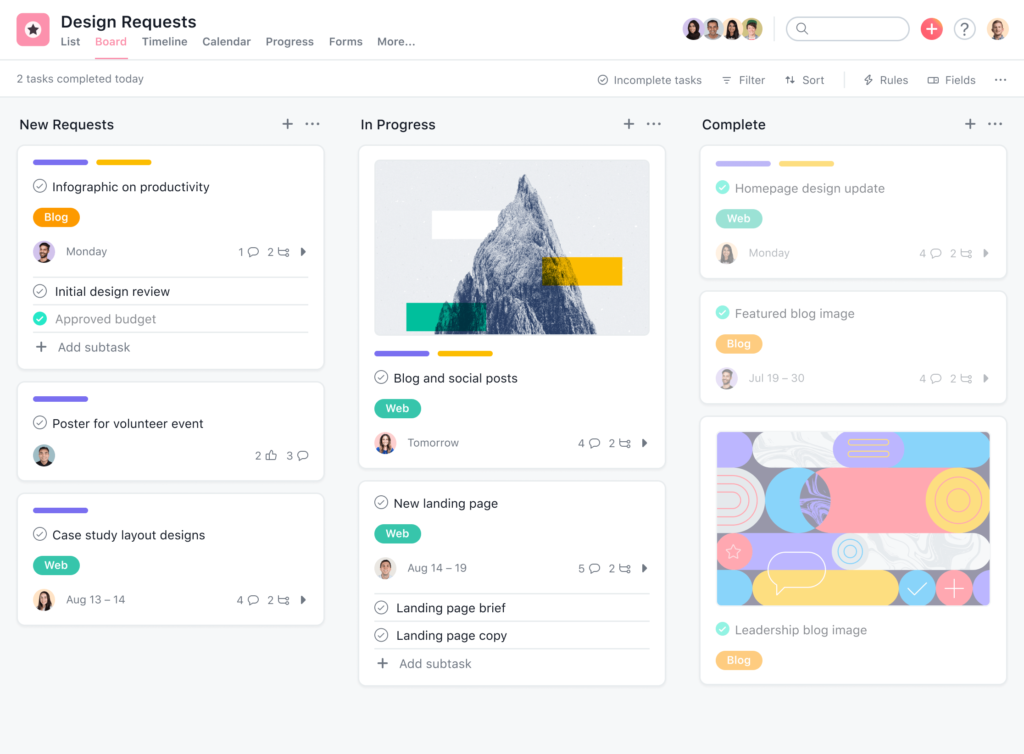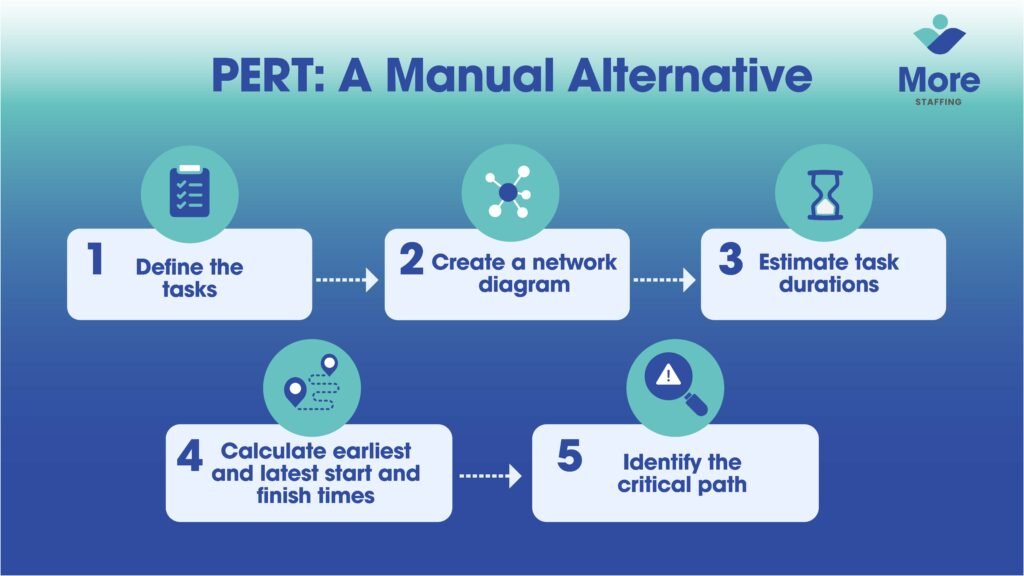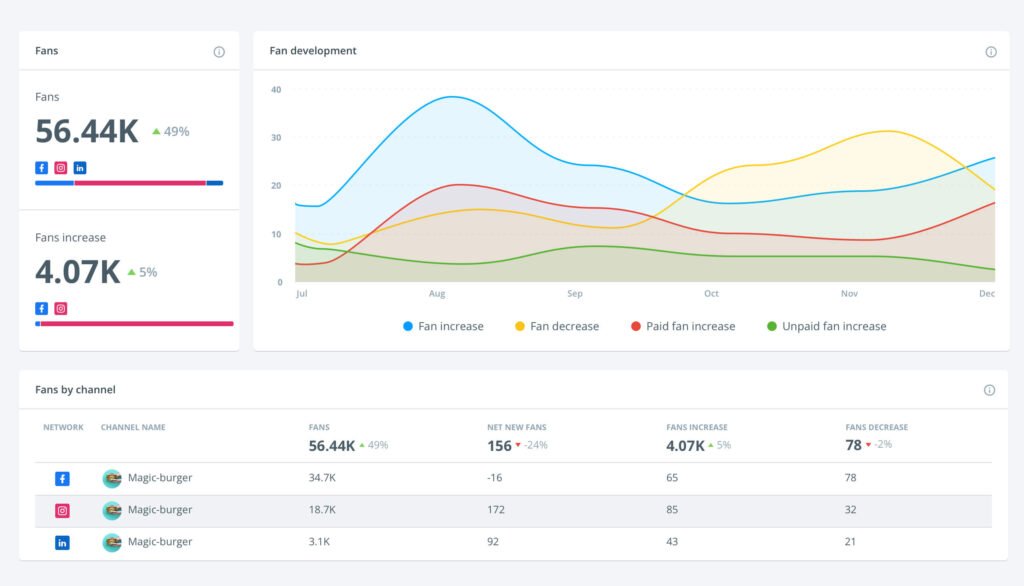Want to know what tools our e-commerce experts actually use for virtual product development?
With the shift toward remote work, selecting the right collaborative tools is essential for effective virtual product development.
This article delves into digital solutions that enhance productivity and drive innovation among distributed teams.
We also asked our in-house experts for their key takeaways on the tools that best suit their project requirements, budget, and preferences.
We’ll explore and compare:
- Project management tools for task organization, tracking, and scheduling.
- Communication tools, including video conferencing and messaging apps, facilitate real-time discussions and information sharing.
- Design software for teams to collaboratively create and refine product designs in a virtual space.
- Data analytics systems that provide insights to optimize processes and enable data-driven decisions.
By understanding these tools, companies can break geographical barriers, boost productivity, and foster innovation. Thankfully, effective virtual product development hinges on a strategic approach to selecting technologies and managing change, allowing teams to achieve exceptional outcomes.
Project Management for New Virtual Product Development

Project management is crucial for new product development, especially when teams are remote. It also helps teams stay organized and meet their deadlines consistently. In this section, we will discuss different project management tools for NPD.
Streamlining Virtual Collaboration
Effective project management is crucial for success in new product development. As teams increasingly work remotely, leveraging the right tools becomes paramount in virtual product development. Popular platforms like Asana, Trello, and Jira offer robust features to keep virtual teams aligned and productive.
Asana

Asana is a user-friendly online tool for organizing tasks, tracking progress, and meeting deadlines efficiently. It benefits teams working on new product development in a digital setting.
The key advantages of Asana for new product origination encompass:
- Teams can produce lists, allocate responsibilities, set due dates, and attach files to keep initiatives on track.
- Team members see updates promptly, disregarding the necessity for long status reports or gatherings.
- Asana’s in-app chatting enables quick inquiries and instant communication within tasks and projects.
- Asana incorporates Slack, Google Drive, and Trello tools for a streamlined workflow.
- Asana allows custom fields, workflows, and templates to match a team’s needs.
Like: Trello
Cost:
Asana offers both free and paid plans. The basic free plan suits small teams with up to 15 members. Asana’s paid plans start at $8.33 per user per month for the Premium plan and go up to $24.00 per user per month for the Enterprise plan.
Trello
Trello is a Kanban-style project management and collaboration tool that allows teams to organize, track, and prioritize their tasks, projects, and workflows. It uses a visual and flexible board interface that enables teams to collaborate effectively, intuitively, and simply.
Some key features of Trello include:
- Visual boards that allow teams to organize projects into lists and assign cards to track tasks, ideas, and assets.
- Assign members to cards to assign tasks and track progress organizationally.
- Attach files, due dates, checklists, and comments to cards for more visibility and accountability.
- Multiple boards can be created for different projects or workflows, and members can be assigned to specific boards.
- Integration with Google Drive, Dropbox, Slack, and other tools for a more seamless workflow.
- Real-time notifications keep all members up to date on changes and progress.
Like: Asana
Cost:
Trello offers free and paid subscription plans. The basic free plan provides unlimited boards, lists, and cards but has some restrictions: file uploads are limited to 10MB per file; only free integrations are available; offline access is not possible; and ads may appear in boards.
The Business Class plan costs $9.99 per user per month and removes all free plan limitations.
Jira
Jira is an issue-tracking and project management tool developed by Atlassian for software development teams. It is like Asana and Trello in that it helps teams organize and prioritize their work.
Some key features of Jira include:
- Agile project management capabilities to help teams implement agile methods.
- Custom workflows to model your unique processes and procedures.
- Issue and bug tracking to manage software development tasks.
- Reporting and analytics to provide visibility into team performance.
- Integrations with over 1000 tools, including Slack, Github, and Confluence.
- Custom fields to track additional details for issues and projects.
Like: Asana, Trello
Cost: Jira offers a free plan for teams of up to 10 users. Paid plans start at $6 per user per month for Jira Software and go up to $18 per user per month for Jira Software Enterprise.
Key Benefits of Project Management Tools
These tools provide centralized task tracking, deadline management, and resource allocation capabilities. They enable teams to visualize project timelines, identify bottlenecks, and adjust real-time workflows. Additionally, they facilitate seamless communication and file sharing, ensuring all team members stay informed and engaged throughout the development process.
PERT: A Manual Alternative

Program Evaluation Review Technique (PERT) is a project management planning tool used to calculate the amount of time it will take to finish a project realistically. It is a manual and less sophisticated alternative to project management tools like Asana and Trello.
It involves creating a network diagram of the tasks in a project and estimating the time required for each task and their dependencies. The team can create a PERT chart using various tools such as Google Sheets, Microsoft Project, Draw.io, and other similar applications.
Steps to Using PERT
The main steps in PERT are:
- Define the tasks: List down all the major tasks and subtasks required to complete the project.
- Create a network diagram: Draw a diagram showing the sequence and dependencies between the tasks. Arrows show which tasks depend on the completion of other tasks.
- Estimate task durations: Assign a time estimate for completing each task based on experience and research.
- Calculate earliest and latest start and finish times: Based on dependencies, determine the earliest a task can start and the latest it can start without delaying the project.
- Identify the critical path: The critical path consists of the chain of tasks that determine the minimum project duration. These tasks require close monitoring.
While simpler than project management tools, PERT has some limitations. It is time-consuming to update the network diagram as the project evolves. It also does not facilitate seamless communication, resource allocation, and file sharing between team members.
Like: Trello, Asana
Cost:
PERT does not have an official cost as it is a manual project management technique. However, implementing PERT may require additional labor hours from team members to create and regularly update the network diagram, task duration estimates, and critical path analysis.
The time spent on these PERT activities takes away from other value-adding tasks. In contrast, project management tools automate much of this work, saving teams time and labor costs.
Download Now: Manufacturer Audit SOP For E-Commerce Success
Virtual Communication Strategies for Cross-Functional Teams
Effective virtual communication is key for teams that work across different areas and time zones, helping to improve teamwork, build trust, and boost productivity. Some key virtual communication strategies include:
Using Digital Platforms
In the remote work era, it’s vital for teams to use digital tools effectively to collaborate smoothly. Platforms like Slack, Microsoft Teams, and Zoom have become indispensable tools for fostering connectivity and productivity across diverse teams.
Slack

Slack is a cloud-based communication platform that facilitates team collaboration.
- Instant messaging: Slack provides instant messaging channels for topic-based real-time communication.
- Mentions and direct messages: Team members can send direct messages to individuals or use @mentions to notify specific people in channels.
- File sharing: Files such as documents, images, and videos can be easily shared and organized within channels.
- Integrations: Slack integrates with over 1,500 apps to extend its functionality for tasks like scheduling meetings, assigning tasks, and tracking projects.
- Archiving and search: Slack allows users to archive channels and search messages for content.
Like: Microsoft Teams, Google Chat
Cost:
Slack offers both free and paid plans. The free plan includes unlimited messaging, file storage, and integrations. Paid plans range from $8 to $150 per user per month, depending on the features required.
Microsoft Teams
Microsoft Teams is a collaboration platform developed by Microsoft. It combines workplace chat, meetings, notes, and attachments.
- Team chat: Microsoft Teams allows team members to communicate via chat channels for different topics or teams.
- Audio and video calling: Team members can use audio and video to have one-on-one calls or join scheduled group meetings.
- File sharing and storage: Files such as documents, images, and videos can be uploaded, shared, and organized within teams.
- App integration: Microsoft Teams integrates with many popular apps like Office 365, Power BI, and Planner.
- Archiving and search: Messages can be archived and searched within Teams.
Like: Zoho Cliq, Slack
Cost:
Microsoft Teams offers both free and paid plans. The free plan includes unlimited chat, meetings, file storage, and app integrations. Paid plans start at $5 per user per month for the Office 365 Business Essentials plan and go up to $32 per month for the Office 365 E5 plan.
Zoom
If you are part of a team that pivoted to virtual or hybrid work during the early onset of the COVID-19 pandemic, you are most likely familiar with this. Zoom is a cloud-based video conferencing service.
- Video conferencing: Zoom allows users to host and join virtual meetings with up to 100 participants via video.
- Screen sharing: Meeting hosts can share their screen with other participants to present slides, demonstrate an application or collaborate.
- Cloud recording: Zoom meetings can be recorded and saved to the cloud for later viewing.
- Chat and annotation: During a meeting, participants can chat with each other and annotate on a shared screen.
- Integration with other apps: Zoom integrates with many popular apps like Google Calendar, Outlook and Salesforce.
Like: Slack, Teams, Google Meet
Cost:
Zoom offers free and paid video conferencing plans. The free basic plan includes unlimited meetings with up to 100 participants for 40 minutes. The Pro plan for $15 per host removes the 40-minute limit and allows up to 300 participants.
The Business plan costs $20 per host and adds single sign-on, reporting, and cloud recording. Lastly, the Enterprise plan offers unlimited cloud recording, account management, and advanced security. Pricing varies.
Optimizing Virtual Team Communication
Balancing synchronous and asynchronous communication is crucial for effective virtual teamwork. Real-time interactions via Zoom are essential for face-to-face meetings, while platforms like Slack and Microsoft Teams offer robust channels for ongoing discussions and file sharing. This dual approach accommodates different time zones and work schedules, promoting flexibility without sacrificing team cohesion.
Streamline the Flow of Information
Teams should establish clear protocols to enhance communication further. This involves defining response times, setting status indicators, and creating dedicated channels for specific projects or topics. These guidelines help minimize miscommunication and streamline the flow of information.
Enable Real-Time Ideation
Leveraging tools like screen sharing, virtual whiteboards, and collaborative documents can significantly improve virtual collaboration. These features replicate in-person brainstorming sessions, enabling real-time ideation and problem-solving, which fosters creativity and innovation despite physical distance.
Lastly, building a strong team culture in a virtual setting is vital. Regular virtual coffee breaks, team-building activities, and informal chat channels help maintain social connections and strengthen team bonds. These future-proof e-commerce strategies will ensure that cross-functional teams remain cohesive and aligned, even when working remotely.
Collaborative Design Tools to Streamline Supply Chain Workflows

Today, collaborative design tools play a crucial role in streamlining supply chain workflows. These innovative platforms enable teams to work seamlessly across different locations, enhancing efficiency and reducing time-to-market.
Visual Collaboration Platforms
Platforms like Figma, Sketch, and Adobe XD have transformed how product teams collaborate by enabling multiple stakeholders to view, edit, and comment on designs in real-time. This level of collaboration minimizes miscommunication and expedites decision-making processes, which is vital in maintaining momentum in supply chain operations.
Cloud-Based CAD Solutions
Cloud-based Computer-Aided Design (CAD) solutions such as Autodesk Fusion 360 and Onshape allow engineers and designers to work on detailed 3D models concurrently, irrespective of their physical locations.
These platforms serve as centralized hubs for design data, ensuring all relevant stakeholders can access the most current information. This reduces errors and streamlines the transition from design to production, shortening production cycles and reducing delays.
Virtual Prototyping Tools
Tools like SOLIDWORKS and ANSYS offer virtual prototyping capabilities critical in modern supply chains. These tools empower teams to create and test digital prototypes before physical production, enabling early detection and resolution of potential issues. This streamlined process optimizes design for functionality and manufacturability, resulting in lower costs and higher product quality.
Optimizing Data Analytics, Version Control and Documentation

In the realm of virtual product development, efficient data management, version control, and documentation are crucial for success. This section explores essential tools and strategies to optimize these processes.
Leveraging Data Analytics
Data analytics tools are essential for making informed decisions. Google Analytics, for instance, provides invaluable insights into user behavior and product performance, allowing teams to refine their marketing strategies and product designs.
Similarly, More Staffing’s CEO, Lara Guevara, uses Brandwatch, a sophisticated social listening and media monitoring platform, to capture market insights and fuel idea generation.
Brandwatch’s ability to track real-time consumer trends and sentiments across major social platforms and blogs helps Lara quickly identify emerging opportunities and make strategic decisions.
Brandwatch

Brandwatch is a social listening and media monitoring platform that our CEO, Lara Guevara uses to gain market insights and generate new ideas.
Some key features include:
- Comprehensive social coverage across all major social platforms and blogs
- Advanced search and filtering to identify relevant conversations
- Real-time alerts when trending topics or key phrases are mentioned
- Sophisticated sentiment analysis to gauge consumer attitudes
Like: Sprout Social.
Cost: starts at $1,500 per month.
Sprout Social
Sprout Social provides a range of features to manage social media accounts:
- It covers major platforms, including Facebook, Twitter, Instagram, and LinkedIn.
- Scheduling and publishing posts for multiple accounts.
- Analytics and reports that track performance and engagement.
- Tools for responding to customer queries on social media.
Like: Brandwatch
Cost: Plans start at $1,500 per month.
Implementing Robust Version Control
Systems like Git are vital for managing collaborative work and maintaining code integrity using these virtual product development tools.
They ensure that all team members can track changes, manage branches, and merge updates efficiently, keeping everyone on the same page with the latest versions of the project.
Streamlining Documentation
Comprehensive documentation is vital for knowledge sharing and project continuity. Confluence, a popular wiki-style platform, facilitates the creation and organization of project documentation. It allows teams to:
- Centralize information
- Collaborate on documents in real-time
- Integrate with other tools like Jira for seamless workflow
Google Workspace also enhances these efforts by providing additional tools for seamless collaboration and document management.
Learn How to Build a Strong Supply Chain with New Product Development
Secure Cloud-Based File Sharing for Seamless Collaboration

Secure cloud-based file sharing has become indispensable for fostering seamless collaboration among distributed teams.
This technology enables real-time access to crucial project files, enhancing productivity and streamlining workflows across geographical boundaries.
Leading Cloud Storage Solutions
Three prominent platforms dominate the cloud storage market: Dropbox, Google Drive, and OneDrive. Each offers unique features tailored to different organizational needs:
- Dropbox excels in file synchronization and version history tracking.
- Google Drive integrates seamlessly with other Google Workspace tools, facilitating real-time collaboration.
- OneDrive, part of the Microsoft ecosystem, provides robust security features and seamless integration with Office 365 applications.
Enhanced Security Measures
As data breaches become increasingly prevalent, these platforms have implemented stringent security protocols.
End-to-end encryption, two-factor authentication, and granular access controls are now standard features, ensuring that sensitive product development data remains protected.
Collaborative Features
Modern cloud storage solutions go beyond mere file storage. They offer collaborative tools such as:
- Real-time editing capabilities
- Comment and annotation features
- Integration with project management software
These features enable team members to work concurrently on files, accelerating the product development cycle and fostering innovation through enhanced communication.
Conclusion
In today’s digital-first landscape, the right collaborative tools are essential for virtual product development success. These technologies foster seamless collaboration, boost creativity, and reduce time-to-market. As virtual work evolves, effectively selecting tools is key to enhancing efficiency and innovation.
While having the right tools is crucial, there are other important steps in virtual product development. In the on-demand version of our latest webinar, our in-house supply chain experts discuss how you can launch new products like a pro.
To take your NPD process to the next level, make sure you include vetting suppliers to prevent challenges down the line. Our manufacturer audit SOP ensures that you thoroughly evaluate potential suppliers, helping you avoid costly mistakes and ensuring that your products meet the highest standards of quality and reliability.
Struggling to find the right tools and talent? More Staffing offers expert staffing solutions that equip your team for success in a competitive marketplace using virtual product development. Harness the power of collaboration with us. Contact us today to learn more.




